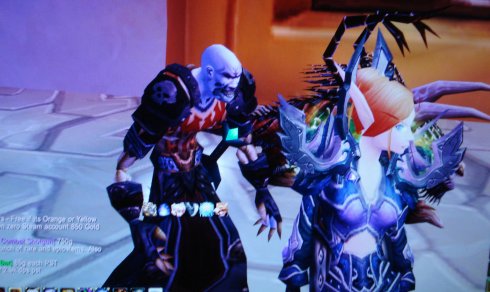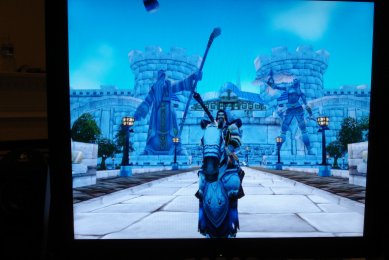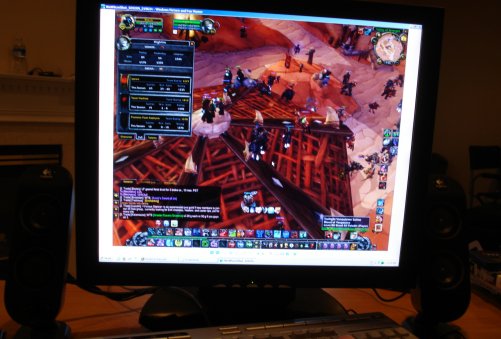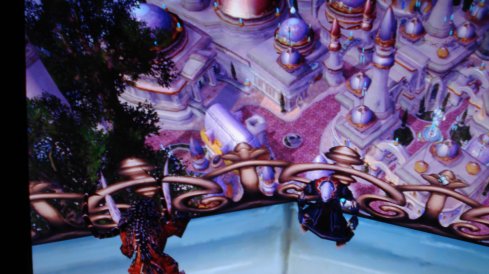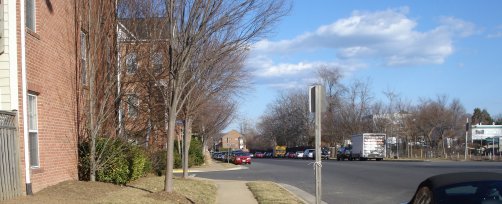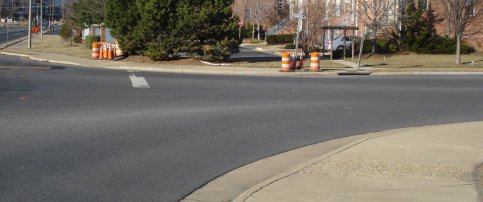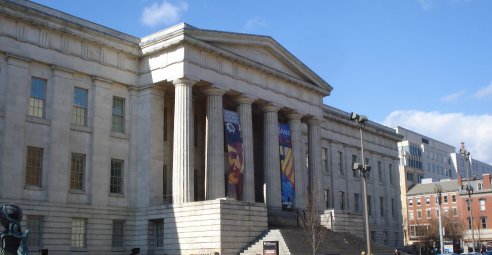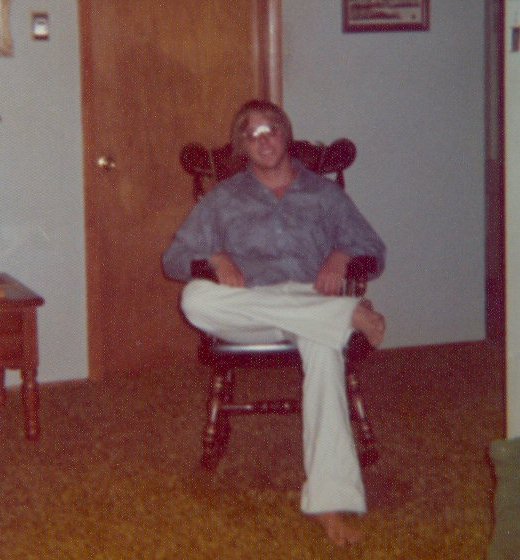I got a Facebook page mostly because of my job. Really. The only way to understand web 2.0 is to be part of it. That is why I started to blog a couple years ago. I spent a lot of time last week and much of last weekend figuring out Facebook. Facebook offers a lot of the advantages of a blog or webpage, but it also features a lot of things that are both intriguing and annoying.

Above is the George Meade Monument on Pennsylvania Ave in Washington. Meade commanded Union forces at Gettysburg. A surprising number of people think it was Grant. I guess one guy with a full beard and a Union uniform looks like another. Many of the officers on both sides of the Civil War knew each other because they formed the West Point social network.
You can keep contact with a lot of people with this social networking system. The big question is does Facebook broaden your contact network or merely dilute it? What we have here is the classic failure to communicate across the interface between human technology and our Pleistocene brains. It is like when a giant water pipe is connected to a narrow straw. Only so much can go through and that volume is determined by the smallest part of the system.
Technology can connect me with many thousands of people, but I still have to know them with my brain developed for life on an environment like the Serengeti Plains, where almost nobody ever encountered more than 150 different people in the course of a lifetime and interacted regularly with only a couple dozen at most. Even after the advent of civilization, people just didn’t get around much. Most people lived like Hobbits; they rarely traveled farther than what they could make in round trip between dawn and dusk. The social capacity of the human brain is the weak link.
I am in danger of collecting too many Facebook friends. I am quickly realizing that I don’t have the energy or inclination to keep up actively with hundreds of people that I could find, so most of my group will be passive. A thousand friends do not mean a thousand daily interactions. This ability to find new friends is the most annoying and intriguing aspect of Facebook.
Below are the stirrings of spring. In a couple of weeks, the spring season will be here. Washington is beautiful in the springtime.

The intriguing part is the connections. We always hear about people being connected and the interconnectivity among opinion leaders etc is the basis for public relations – the power of connections. If we don’t have the resources to influence or even reach mass audiences, we can reach the right social nodes, we can leverage the message. I believed this but never saw it. On Facebook you can see how this could work very graphically. Some people are connectors who bridge lots of diverse groups; others are members of only a few.
The guys with the most friends may not be the one with the most connections. Maybe he has a thousand friends, but they all live in the same town and have similar jobs. You might have a very large but essentially incestuous group. Of course, on Facebook you are not sure if the connecting guys are really influential or if they just are non-participating members of lots of groups. Membership is easy to attain – and fake – online. I wonder how much a person can be connected to more than about a dozen groups, considering again our Pleistocene brains. I also wonder about a guy who would spend enough time online working on those connections. He would almost certainly not be very much involved in the real world and probably wouldn’t know much either if he spends all his time connecting. The term “hollow man” leaps to mind. Of course he is likely to have a lot of corpulence over that hollow center.
Facebook can also teach us something about the network effect, which is when something’s value is increased by getting more users. Usually if more people share something, they each gets smaller part than if anyone had the whole thing to himself. In a network, they all gain. The pie gets bigger the more people step up to the table. Telephones are the classic example. One person with a phone had nobody to talk with. Two are not much better, but each additional entrant makes it more and more useful – eventually indispensable. Facebook encourages the network effect when you search for friends and almost requires it when you want to do something online (such as a quiz). Happily and probably not coincidentally this is also great advertising for Facebook.
The biggest problem with Facebook is its openness. And I don’t mean that some people tell way too much about themselves, although that is a problem too. The real problem is that all your friends can see each other. Most of us like to keep some of our social life in separate spheres. There was a Seinfeld episode where George Costanza feared that if his fiancé entered his social life, relationship George would kill independent George. He called it worlds colliding. It was funny, but it makes some sense. Some relationships are appropriate for some things and not others.
My general complaint against electronic communications is that they are beguiling. Facebook is like that. I spent several hours searching for friends and updating my page until I noticed that my legs were falling asleep and it was getting dark outside. The virtual world provides too much active contact, or at least pseudo social contact. We are all becoming like the Borg. I think it is important to be alone sometimes.
Or maybe individual thinking is going out of style, to be replaced by the hive consciousness. We can all become like ants, bees or termites, beholden to the central consciousness. Those bugs do it with pheromones; we prefer electronic pulses.
Facebook is a lot like beer. For most people, beer lubricates social interactions and they can enjoy it in moderation. But some people abuse it sometimes and it makes them sick. Others abuse it all the time and it makes them boozers and losers.
BTW – I am still accepting new friends, as long as none of us are too demanding or clinging. Don’t expect me to remember your birthday or the name of your dog and we will be okay. My primitive brain is just not up to the task and frankly I just don’t care enough.

